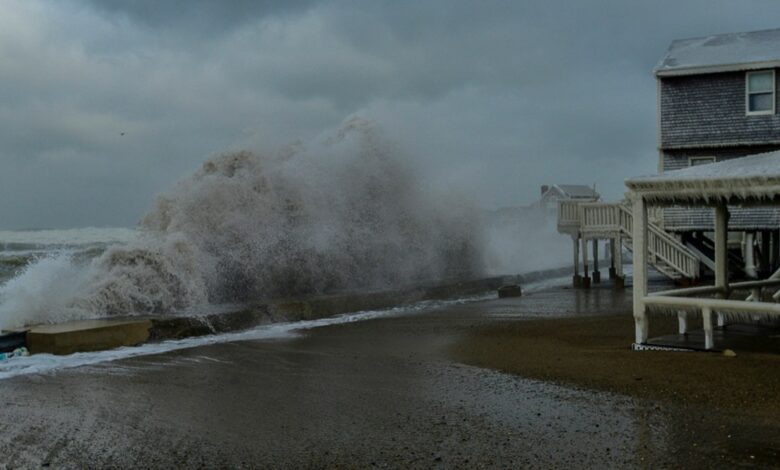Wealthy Massachusetts homeowners spent half a million dollars to build a sand dune that washed away in three days–and they’re dead set on rebuilding it


A group of homeowners in a Massachusetts beach town decided that the onus to protect their homes from intense coastal storms, erosion, and hurricanes was on them. The concerned group in Salisbury Beach pooled together about $560,000, which they paid for out of pocket, and trucked in over 14,000 tons of sand to build a protective dune around several of the coastal properties over the course of five weeks.
The sand barrier lasted three days. But the sacrificial dunes did their job, claimed nonprofit Salisbury Beach Citizens for Change. Without them, the Atlantic Ocean would have “eaten up” 10 to 15 houses in the historic enclave, the nonprofit wrote in a comment on Facebook. Salisbury Beach sits near the New Hampshire border and is home to 9,000 residents.
Now, the Salisbury Beach homeowners are facing a persistent problem many who live in coastal areas are dealing with: trying to secure state or local funding to protect their homes. States like Florida, Maine, Massachusetts, and New Hampshire offer funding or collect information on coastal resiliency grants that communities can apply for. About 1 in 4 Americans live along U.S coastlines, according to a federal report, which also found that the country’s most diverse communities live near the water.
But they’re also areas that are highly vulnerable to natural disasters. According to the report, in 2020 “every mile of the mainland Atlantic coast was under watch or warning from tropical cyclones at some point,” and all but five coastal counties faced “tropical storm-force winds.” The stormier waters are caused by climate change, primarily driven by greenhouse gas emissions from burnt fossil fuels like coal, oil and gas, which continue to warm the planet and create conditions like rising sea levels and increased drought–all of which contribute to more severe storms.
And the problem is getting worse. According to the federal report, 2021 was the “seventh consecutive year in which the U.S. experienced 10 or more billion-dollar natural disasters,” and “many of them were along the coasts.”
Tom Saab, president of the Salisbury Beach Citizens for Change, told NBC that what his community “built this past month, sure, we thought would last longer,” and that its destruction, just three days after it was finished, was a shock. Salisbury has faced storms “from nor’easters to hurricanes,” meteorologist Jonathan Belles told The Weather Company. The town’s proximity to the Atlantic Ocean “gives them a source of moisture,” which, combined with its northern latitude, places the town under a “powerful jet stream during much of the year.” In January, the beach faced severe erosion.
The homeowners’ next plan is to establish snow fencing and plant dune grass, which, when planted beneath sand dunes, prevents sand from blowing away or washing out with currents. State Sen. Bruce Tarr estimates the new plan will cost at least $1.5 million, yet a source of funding to protect the homes there remains unclear.
One of the biggest hurdles, the Salisbury group said on Facebook, is that the beach is owned by the state of Massachusetts and “it seems all they do is know how to regulate,” rather than maintain it.
Source link




